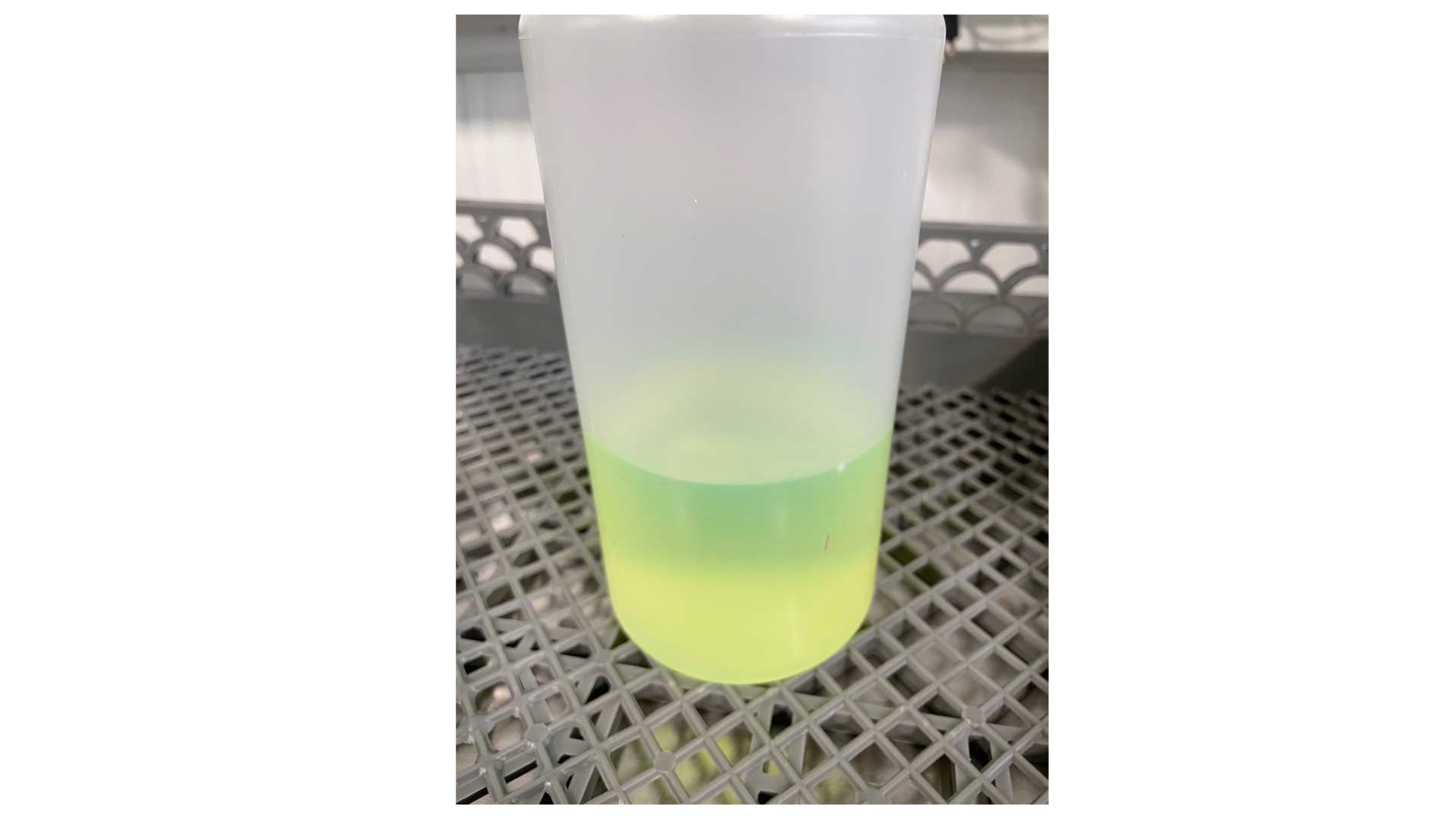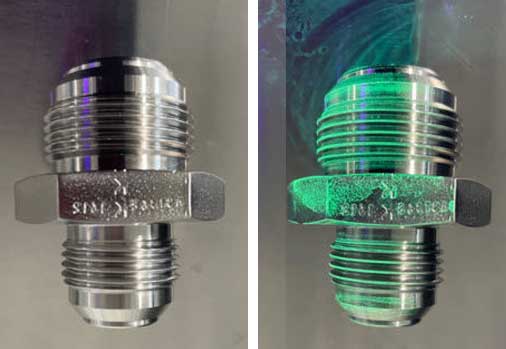There are several forms of non-destructive testing (NDT) available to manufacturers of critical components. Whether for aerospace or automotive engine components, the ability to evaluate components for integrity is vital to both part and system life. One of the most popular and accepted methods is fluorescent penetrant inspection.
Fluorescent penetrant inspection (FPI) is a type of dye penetrant inspection where fluorescent dye is applied to the surface of a non-porous material to detect defects that may compromise the integrity or quality of the part. After the dye is applied to the components, they are viewed under a black light. The fluorescent dye will remain behind in any cracks, thereby lighting up the flaw in the component. This process helps reveal any cracks on a part that may not appear to the naked eye.
Generally, there are two cleaning steps associated with the process. The first is to remove all oil and debris from the part to remove any contamination that may be “covering” the indications or “cracks.” The second cleaning step, a post clean, removes the FPI solution used to find the indications.
The vapor degreasing process using nPB or TCE as the degreasing solvent has been common for many years. Now that the EPA has increased scrutiny of these solvents, users are searching for alternative solvents they can use in their vapor degreaser. The solvent degreasing process was used because it is a water-free process.
In the past, there has been a notion that the solvent process is best because the process is so easy — parts go in the degreaser dirty, they come out clean and dry. Also, some felt that aqueous chemistries would cause the indications to be covered due to poor cleaning or rinsing and poor drying.
Based on our experience with Brulin aqueous chemistries, these notions are myths. We have many aerospace customers using our aqueous chemistries for pre/post FPI processing. Either process has proven effective.
If you have a vapor degreaser and want to keep using it for your FPI process, here are some considerations to be aware of regardless of the vapor degreasing solvent you use.
Recently we did some FPI testing with our SolVantage® Flush. The FPI fluid we worked with was Magnaflux Zyglo ZL67. The Flush is Brulin’s vapor degreasing solvent that boils at 114F. It is a Fluorinated Trans Blend that has exceptional degreasing capabilities. Flush proved very effective in removing FPI solution from various surfaces in a vapor-only process.

Left: 316 SS Fittings with dye penetrant (no water rinse) baked on. Right: Same fittings after Rocket flush solvent cleaning 20 minutes (no water rinse) exposed to UV light to show residue. Note (green) residue seen in thread valley was easily and fully washed away with rinse water.
We did observe that over time the solvent became extremely loaded with the FPI solution.

Dye penetrant dissolved in the solvent.
We also observed that it was possible to re-deposit the FPI fluid onto parts once the solvent was loaded.

Clean 316 SS Fitting (left) dipped in “dirty” solvent (right) exposed to UV light. Dirty solvent can re-deposit contamination back on clean parts.
In this case, the customer we were working with used the rinse water from their aqueous process to remove the FPI fluid. To keep the FPI fluid from re-depositing on parts during processing, our team recommended the following.